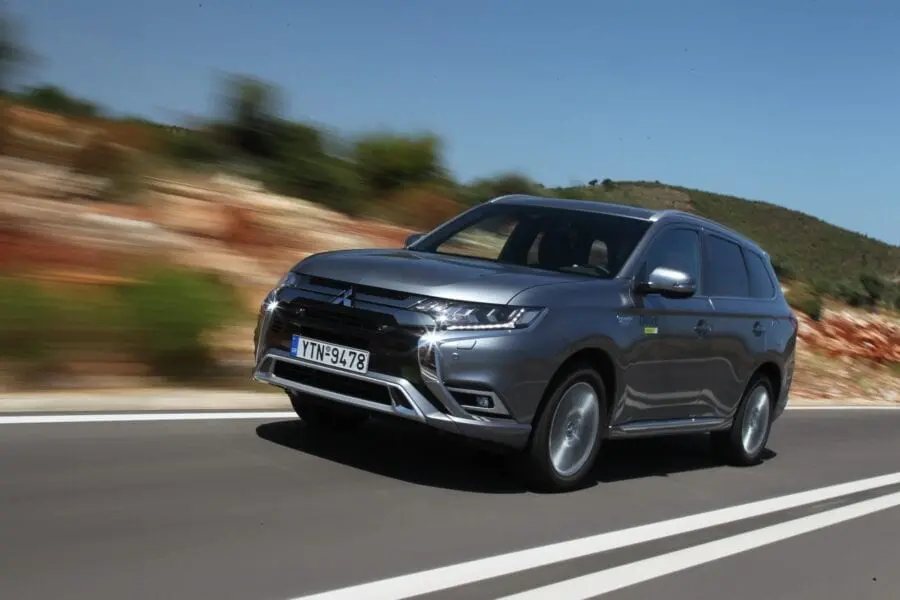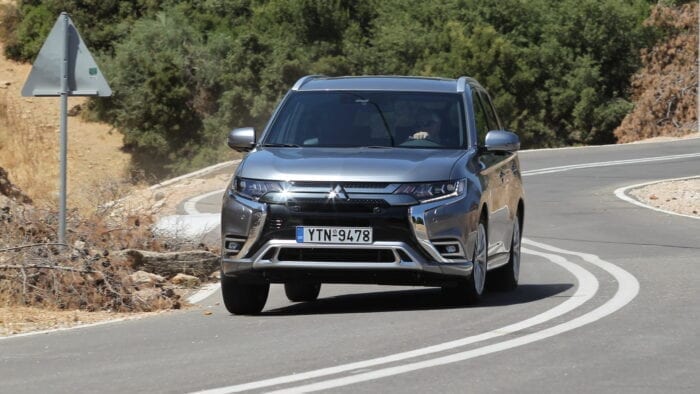
Test drive: Mitsubishi Outlander PHEV
Content
Mitsubishi Outlander is a unique car, where the power plant consists of a 2-liter gasoline engine with electric motors that are powered by batteries. The batteries, in turn, can be charged either on the move, or connected to the mains. The first model update was in 2015, and the second was introduced by the company in 2020.
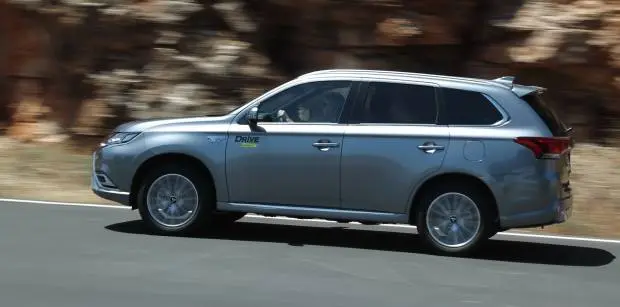
The appearance of the Mitsubishi Outlander 2020 is familiar and familiar. Of the bright and memorable new details - the nose of the car. The headlights have become more accurate and pointed (fully LED, by the way), chrome-plated “cheeks”, the model name inscription (this is an option from the accessories catalog). The main detail of the novelty is located at the back: the S-AWC designation, indicating a “smart” all-wheel drive
Speaking directly about the technical stuffing, the Mitsubishi Outlander PHEV dorestyling is driven by a four-cylinder 2,0-liter gasoline engine that generates 121 horsepower and 186 Nm of torque, as well as two synchronous permanent magnets: the front one develops 82 hp . and 137 Nm of peak traction, and the rear - 82 hp and 195 Nm. The new model is equipped with a 12 kWh lithium-ion battery. The full charge time is 5 hours, or 30 minutes to 80%. As a result, the “doubly movable” crossover is able to accelerate from 0 to 100 km / h in 11 seconds to conquer as much as 170 km / h.
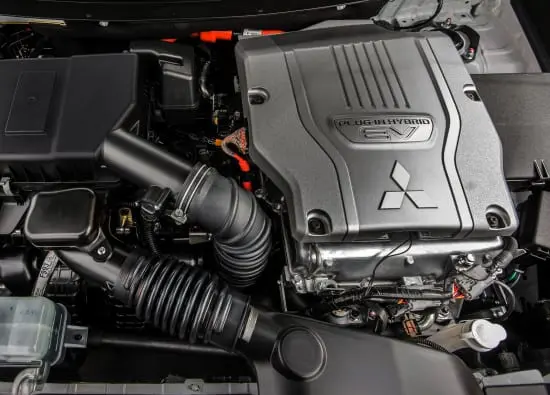
What's unique about the 2020 Mitsubishi Outlander
The Outlander PHEV is built on a dedicated electrical platform. Its propulsion system is based on two electric motors, one on the front and the other on the rear axle (no mechanical connection between them), and the gasoline engine, in most cases, works as an auxiliary, moving the battery charging generator.
In everyday conditions (up to 135 km / h) and when charging the battery, the Outlander moves like a purely electric car (Pure EV mode), while two electric motors receive energy from the battery without turning on the gasoline engine.
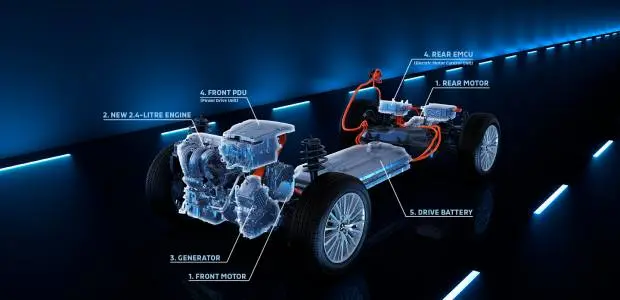
In cases of acceleration or when the vehicle is subjected to increased stress (e.g. climbing hills) or the battery is running low, the sequential hybrid mode is automatically activated - for 3-10 minutes. The car is still powered by the battery, but the gasoline engine is also powered to move the charge generator. The return to Pure EV mode is as fast as possible.
In addition, the vehicle is equipped with a transmission control system that has four operating modes - “Normal”, “4WD Lock”, “Snow” and “Sport” (they change the sensitivity of the anti-slip technology and the accelerator pedal).
Is it economical?
If you are considering, is it worth buying the brand new Mitsubishi Outlander. then the answer is yes. In order not to beat around the bush, consider everything with an example.
The minimum daily mileage is 43-45-48 km, which the Mitsubishi Outlander PHEV rechargeable hybrid can only drive on electric traction - as a result, urban fuel consumption can be 0 l per 100 km of track. But for this you need to constantly recharge the battery (about 10-12 kWh every day or about 20-25 kWh in two days). At a price of 1,68 UAH. for 1 kWh this gives us a cost of 100 km in the city of about 34-42 UAH. - or the equivalent of the price of 1,5 liters of fuel. And although my consumption, according to the on-board computer, turned out to be not 0 l per 100 km, but 1,5-2 l per 100 km (even taking into account the battery charging, sometimes the ICE turned on during dynamic acceleration), but it still turns out that a full-fledged family crossover manages to move around the city with total costs at the price level of 2-3 liters of fuel.
However, if you forget about the outlet, the rechargeable hybrid Mitsubishi Outlander PHEV will turn into a regular hybrid. That is, it will often alternate driving on an electric motor and ICE - as a result, “bringing” to the city a consumption of about 7,5 liters per 100 km of track.
An electric motor also initially works on the track. Therefore, if we are talking about daily commuter trips, then they can also be made completely without fuel consumption, only on electric traction. But when the electricity runs out, the car switches to a gasoline engine and we get the usual consumption for a crossover of this type and size: at a speed of 80-90 km / h - about 6,5 liters per 100 km, at a speed of 110-120 km / h - consumption 8 liters per 100 kilometers. The fuel tank has a capacity of 45 liters.
The general guarantee is three years or 100 thousand kilometers, the warranty on the battery is 8 years (guarantee that the capacity is kept at least 70% of the original). The frequency of maintenance is once a year or 15 thousand km, the basic maintenance is estimated at 3,3 thousand UAH. (for Kiev, in other cities it may be cheaper due to the lower cost of a standard hour).

Changes in the cabin. Specifications
- Body - crossover, 7 seats
- Dimensions - 4,695 x 1,81 x 1,71 m
- Wheelbase - 2,67 m
- Clearance - 215 mm
- Trunk - 128 L (7-seater) or 502 L (5-seater)
- Payload - 655 kg
- Curb weight - 1555 kg
- Motor - gasoline, atmospheric, R4, 2,4 l
- Power - 167 HP at 6000 rpm
- Torque - 222 Nm at 4100 rpm.
- Specific power and torque - 107 hp 1 t; 143 Nm per 1 t
- Drive - All-Wheel Drive S-AWC
- Transmission - automatic transmission CVT INVECS-III Sport Mode
- Dynamics 0-100 km / h - 10,5 s
- Maximum speed - 198 km / h
- Fuel consumption (passport), city - 10,4 liters per 100 km
- Fuel consumption (passport), highway - 6,8 liters per 100 km
- Country of Origin - Japan
- The minimum price of the car is 549 thousand UAH. or $ 23,5 thousand
- The price of the test car is about 789 thousand UAH. or $ 34 thousand
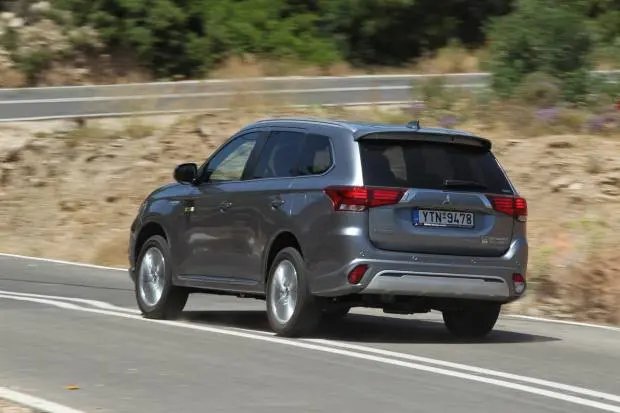
Speaking of the interior, for the most part it barely changed. Here you can note both the pros and cons.
Cons:
- copious use of gloss;
- insufficient steering wheel adjustment range if you wish to raise it at the top.
Pros:
- soft plastic;
- beautiful and clear devices.
Of the technologies inside the cabin: a multimedia system and a climate control unit. Multimedia Mitsubishi Connect 2 offers an 8-inch display, a new design of the start page (in the form of tiles), connecting smartphones, playing video from a USB flash drive. The climate control system is completely new: he received a pair of grooved washers and rectangular buttons with silver eyeliner. The interior looks more modern than the previous version.
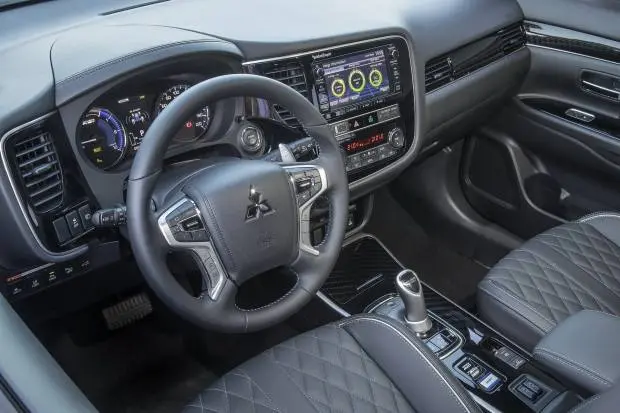
The seats are wide and soft. The front compartment remains the same. From the interesting: the appearance of the third row of seats. It is possible to move forward / backward of the second row. And the back sofa is divided into two asymmetric parts that can be moved separately from each other. The huge trunk easily turns into two additional seats. If you have a large family, with this machine you can travel long distances in comfort.
Price
Before buying a car, each of us quickly makes calculations that will help to understand whether it is worth buying this particular model. Mitsubishi Outlander PHEV can be used as an electric car with the possibility of additional mileage. But then it needs to be charged every day. In cold autumn and winter, you will have to charge several times a day. Most likely once at home, a second time at work. And for this, sockets or charging stations are needed there. Then you can spend a minimum of money on operation - mainly on electricity. If you do not charge every day, gasoline will go 5-7 liters per hundred.
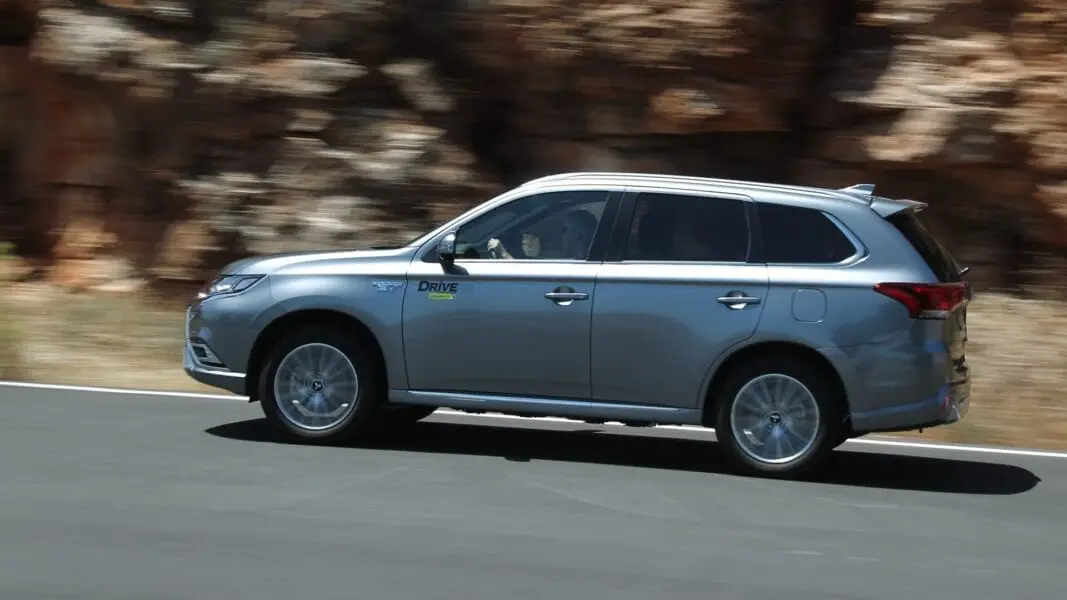
And if you don't bother with sockets and chargers, the Outlander PHEV will work like a regular hybrid and burn 8-11 liters per hundred - almost like a similar crossover. Mitsubishi Outlander PHEV is one of the most technologically advanced cars in its class and within the brand's model range. Along the way, the most expensive: the price of the Mitsubishi Outlander PHEV is UAH 1, or about $ 573.
